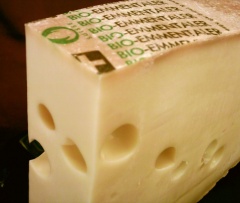Difference between revisions of "Cheese"
From Cargo Handbook - the world's largest cargo transport guidelines website
| Line 4: | Line 4: | ||
| stowage factor = 1.13 - 1.81 m3/t (cartons)<br>2.80 m3/t (rolls)<br>2.50 m3/t (cartons in mesh containers)<br>1.48 - 1.62 m3/t (boxes)<br>1.00 - 1.34 m3/t (cartons)<br>1.56 - 2.00 m3/t (mesh containers)<br>1.84 - 2.00 m3/t (cartons from New Zealand)<br>1.56 m3/t (boxes from Argentina)<br>2.00 - 2.26 m3/t (Camembert in boxes)<br>1.84 - 2.00 m3/t (Edam in boxes) | | stowage factor = 1.13 - 1.81 m3/t (cartons)<br>2.80 m3/t (rolls)<br>2.50 m3/t (cartons in mesh containers)<br>1.48 - 1.62 m3/t (boxes)<br>1.00 - 1.34 m3/t (cartons)<br>1.56 - 2.00 m3/t (mesh containers)<br>1.84 - 2.00 m3/t (cartons from New Zealand)<br>1.56 m3/t (boxes from Argentina)<br>2.00 - 2.26 m3/t (Camembert in boxes)<br>1.84 - 2.00 m3/t (Edam in boxes) | ||
| humidity and moisture = Cheese requires particular temperature, humidity/moisture and ventilation conditions.<br>Relative humidity:<br> approx. 70 - 90% (depending on variety)<br>Water content:<br> approx. 35% (hard and slicing cheese)<br>approx. 50% (soft cheese, curd cheese, processed cheese)<br> Maximum equilibrium moisture content:<br> approx. 70 - 90% (depending on variety) | | humidity and moisture = Cheese requires particular temperature, humidity/moisture and ventilation conditions.<br>Relative humidity:<br> approx. 70 - 90% (depending on variety)<br>Water content:<br> approx. 35% (hard and slicing cheese)<br>approx. 50% (soft cheese, curd cheese, processed cheese)<br> Maximum equilibrium moisture content:<br> approx. 70 - 90% (depending on variety) | ||
| − | | ventilation = | + | | ventilation = Recommended ventilation conditions: circulating air, 15 - 20 circulations/hour; fresh air where required. Inadequately ventilated cheese very rapidly succumbs to the risk of mold growth. In addition, drafts may cause losses in quality. |
| − | | risk factors = | + | | risk factors = Cheese is sensitive to pressure and impact loads. Improper handling or stowage may result in damage. |
}} | }} | ||
Revision as of 15:40, 8 February 2012
| Infobox on Cheese | |
|---|---|
| Example of Cheese |  |
| Facts | |
| Origin |
|
| Stowage factor (in m3/t) | 1.13 - 1.81 m3/t (cartons) 2.80 m3/t (rolls) 2.50 m3/t (cartons in mesh containers) 1.48 - 1.62 m3/t (boxes) 1.00 - 1.34 m3/t (cartons) 1.56 - 2.00 m3/t (mesh containers) 1.84 - 2.00 m3/t (cartons from New Zealand) 1.56 m3/t (boxes from Argentina) 2.00 - 2.26 m3/t (Camembert in boxes) 1.84 - 2.00 m3/t (Edam in boxes) |
| Humidity / moisture | Cheese requires particular temperature, humidity/moisture and ventilation conditions. Relative humidity: approx. 70 - 90% (depending on variety) Water content: approx. 35% (hard and slicing cheese) approx. 50% (soft cheese, curd cheese, processed cheese) Maximum equilibrium moisture content: approx. 70 - 90% (depending on variety) |
| Ventilation | Recommended ventilation conditions: circulating air, 15 - 20 circulations/hour; fresh air where required. Inadequately ventilated cheese very rapidly succumbs to the risk of mold growth. In addition, drafts may cause losses in quality. |
| Risk factors | Cheese is sensitive to pressure and impact loads. Improper handling or stowage may result in damage. |











